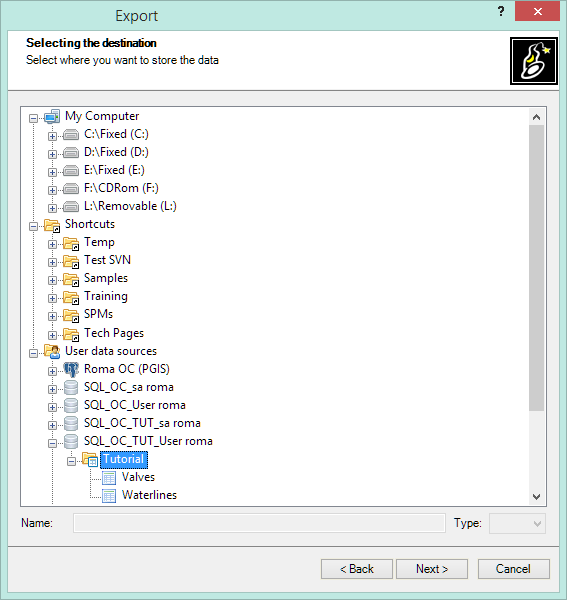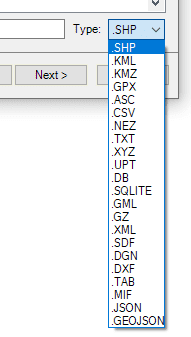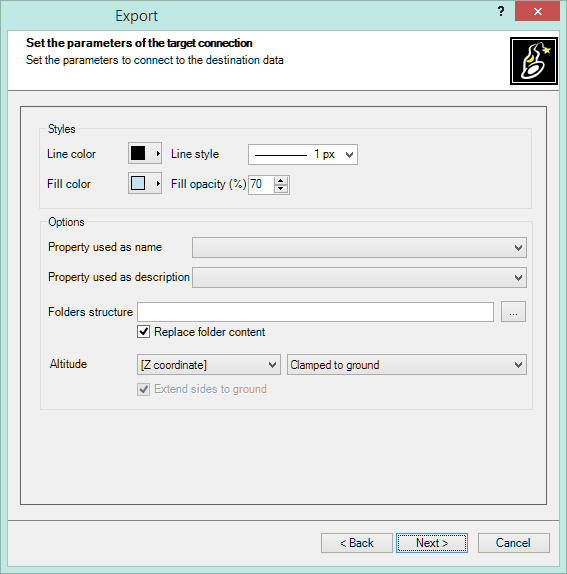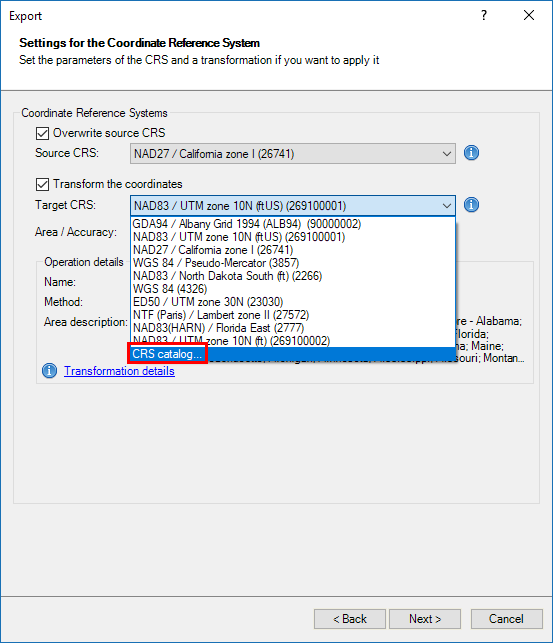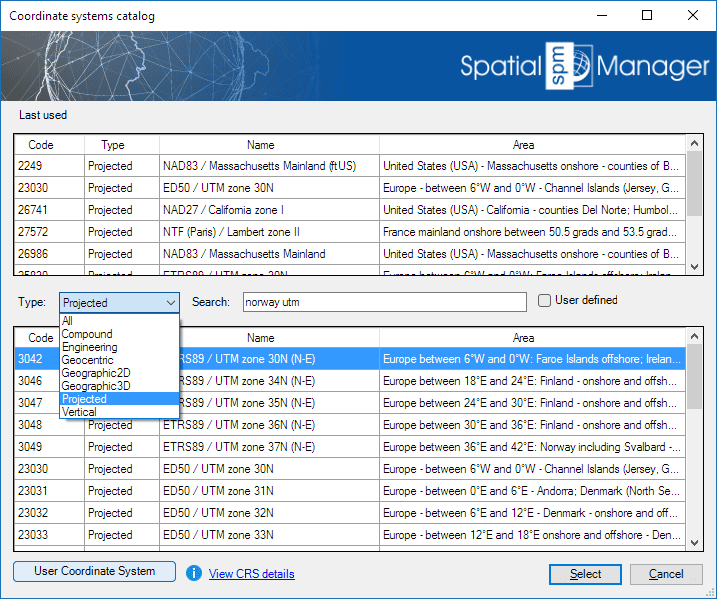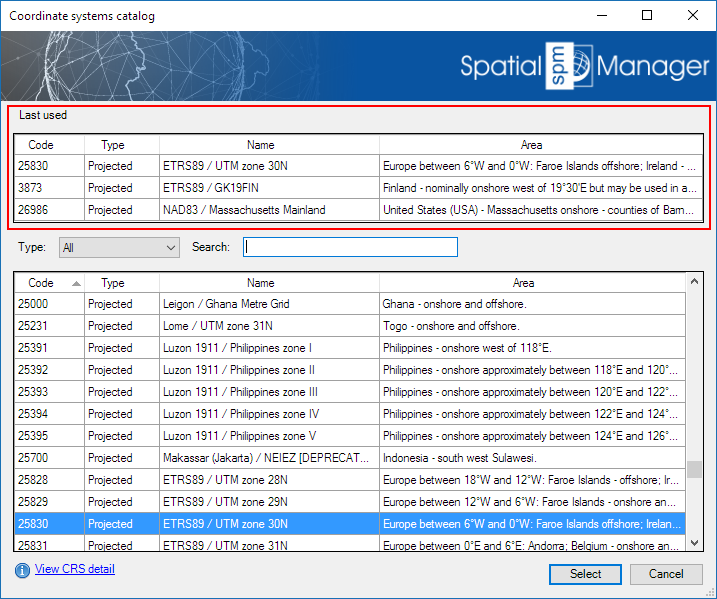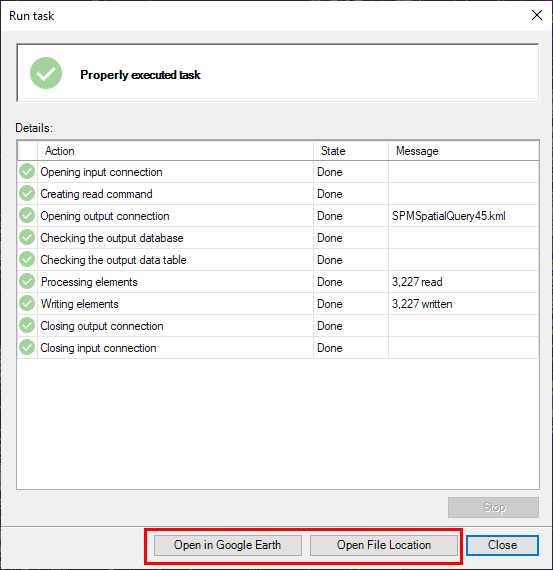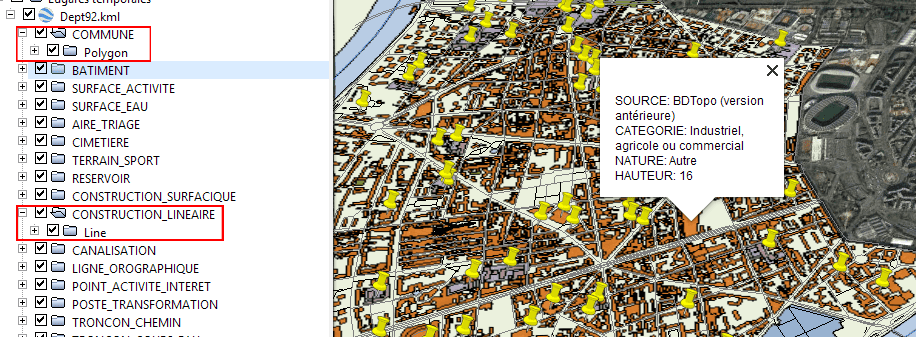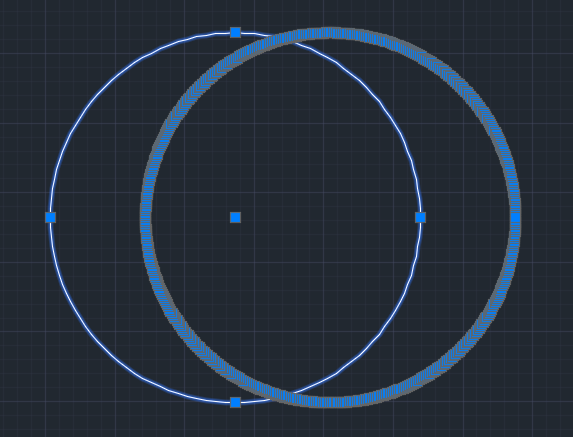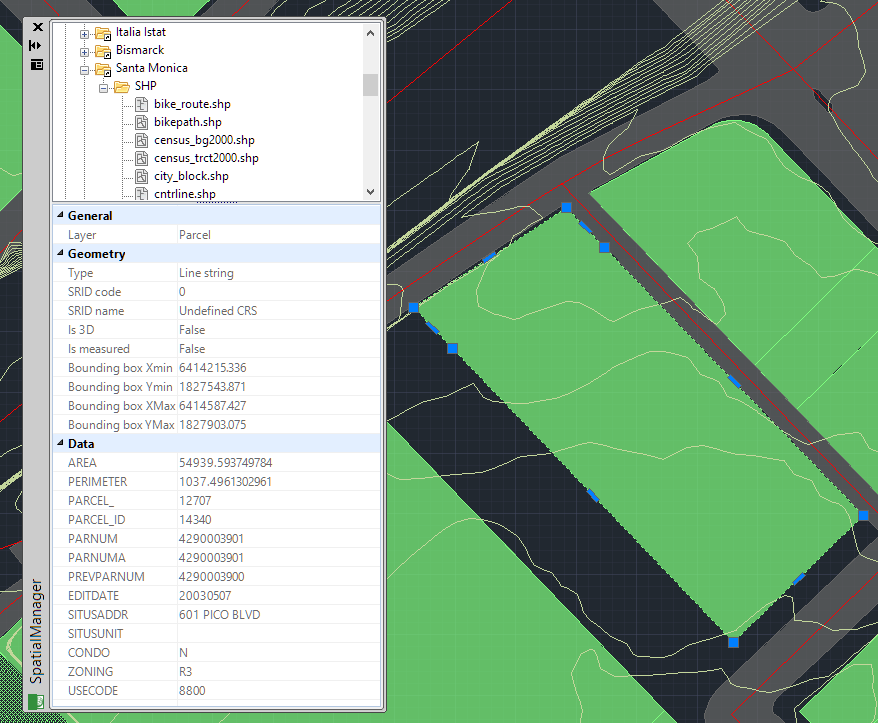Spatial Manager™ for BricsCAD - FAQs: Export ("Professional" edition only)
Introduction
- Objective of this section
- To learn how to define export processes and their parameters and manage coordinate transformations
- Topics in this section
- Targets: data sources
- Export parameters: BricsCAD entities selection, entities report, treat closed Polylines as Polygons
- One-click export to Google Earth ("Standard" and "Professional" editions)
- Transforming the coordinates: source and target, last used coordinate systems, searching in the coordinate systems table and transformation parameters
How can I Export BricsCAD entities as spatial features?
You can export BricsCAD entities as spatial features into files or databases by executing the 'SPMEXPORT' command of Spatial Manager™ for BricsCAD, which you will find in the "Spatial Manager" ribbon, toolbar or drop-down menu. This will launch the "Export" wizard of the application, which shares some of the steps with the Import wizard. The command not only exports the selected entities but saves their Extended Entity Data (EED/XDATA) as data tables (see below). Upon completion of any export process to a file, you can directly open the file location. When exporting to a KML or KMZ file you can choose to open the file in Google Earth (if installed)
While running the "Export" wizard, you can select the export parameters that match your needs:
- Export selection
- Select all entities: all entities in the drawing (layers "On" and "Thaw") will be exported
- Only selected entities: only a selection of entities will be exported. You can select the entities before executing the Export function or by using the Selecting button in this window
- Select entities in a layer: only the entities included in an BricsCAD Layer will be exported. You can select this layer using the drop-down list in this window
- Export object data (options tree)
- Extended Entity Data (EED): the exported data Table will include the entities data (EED/XDATA). You can choose which Tables and/or Fields will be exported
- "Handle" (unique key): when checked, the data Table will include a new Field whose value will be the "BricsCAD Handle" which is unique for every entity in a drawing
- Layer: when checked, the data Table will include a new Field whose value will be the Layer of the entities
- Elevation: when checked, the data Table will include a new Field whose value will be the Elevation of the entities
- Note: regardless this option, the application will use the entity Elevation as Z-coordinate when exporting any XY-only entity (Circles, Polylines, etc.)
- Blocks data: when checked any of the following, the data Table will include new Fields for the corresponding data of the Block References (if any)
- Name and Attributes
- Rotation
- Scales
- Texts data: when checked any of the following, the data Table will include new Fields for the cooresponding data of the Text entities (if any)
- Contents
- Rotation
- Height
- Point coordinates: when checked any of the following, the data Table will include new Fields for the corresponding X/Y/Z Coordinate values of the Point-type entities (if any)
- X
- Y
- Z
- Note: If the Coordinates are Transformed along the Exporting process (see this paragraph), the Transformed values will be exported instead of the original values
- Other
- Treat closed polylines as polygons: when checked, all closed Polylines in the drawing will be exported to the target as Polygon features. Most of the time the closed polylines represent polygonal elements in the target data format and this conversion can be automatic
- Also export fields with null values
- If not checked (default value): when you export to a target table with uniform fields structure (such as Shapefiles SHP), the table will include any field which have a non-null value in at least one entity of the export selection. When you export to a target table with non-uniform fields structure (such as KML), each entity will only include the fields which have a non-null value for the entity itself
- If checked: in all cases, each entity and thus the entire table, will include all the fields (null or non-null)
- Entities report: the application shows here the total number of the entities which will be exported and any warnings prior to the export process, such as the total number of unsupported entities which will not be exported or others
When duplicate Fields will be automatically Renamed (by adding a correlative suffix) in the exported Tables?
- When there are Fields that can be found in different Tables having the same Name but different Type. So that, those that can be found in different Tables but having the same Name and the same Type are considered as a single field
- When a Field (for example "X") already exists for any object, and the export options force to add a Field with the same name (such as the "X" coordinate of the points)
How can I configure the spatial Target when exporting from BricsCAD?
When you export using Spatial Manager™ for BricsCAD you must to select the exporting destination. If needed, you must also select the data provider and its parameters
First, you select the destination for the exported data: a file or a table inside a file or a database (or inside a schema of a file or a database)
Next, you select a file type (the data provider). This step is not required if you have selected a UDS-based destination which defines its own data provider and the provider parameters (such as a SQLite table, PostGIS table, a UDS for a file, etc.)
Then, you configure the export data provider connection parameters, if needed (Image: sample of the KML/KMZ files data provider)
How can I define a Transformation of coordinates when exporting?
When you are Exporting BricsCAD entities as spatial Features using Spatial Manager™ for BricsCAD, you will see that you can choose a Transformation of coordinates from the source to the target, in the "Export" wizard. This means that the application will calculate a geometric transformation between the source and the target data, which will depend on the chosen CRS for the source (drawing) and for the target (outgoing Features) data. You can choose the appropriate CRSs by clicking on "CRS catalog...", in the CRS dropdown list for the source or for the target data. In the CRS table you can:
- Filter the CRSs by type (Geocentric, Projected, etc.)
- Choose a CRS by clicking on its row in the table
- Search CRSs by typing the search criteria in the "Search" box. You can type as many words as you like here,separated by blanks. The application will find all the rows which include all these words in any column of the table
After choosing a pair of valid CRS for a Transformation, you can choose the geographic Area to apply it to (the application will choose by default the most common Area for this Transformation)
If the application "knows", "guesses" or "can assume" the CRS of the source and/or the target data, they will be chosen by default. You will be able to modify this choice, except in cases where only one CRS is valid; for example, for a KML or a KMZ file the only valid choice is the CRS WGS84 (SRID 4326), because these types of file are always defined using this CRS
You can assign a CRS to the drawing, or modify it, using the command 'SPMSETCRS'. By executing this command you will access the CRS Catalog of the application, described in the previous lines. In this case the Type "Projected" will be selected by default because is the most common choice
- When exporting:
- Those entities without assigned CRS will adopt the CRS of the drawing in the Transformation of coordinates
- If all the entities to export have the same assigned CRS and the drawing has not an assigned CRS, the Transformation of coordinates will take the CRS of the entities as the source CRS by default
- Notes:
- As you will see, the CRS dropdown lists will include more and more CRSs as they have been previously chosen in other Transformation operations, so that you can choose your "last-used" CRSs directly from the dropdown list without having to access the CRS Catalog all the time. In addition, the CRS Catalog window shown when you execute 'SPMSETCRS' to assign a CRS to the drawing, or modify it, also includes a list of the "last-used" CRSs (if any) in the upper zone
- Coordinate Systems objects available in the current version
Can I quickly Export the current drawing status to Google Earth ("Standard" and "Professional" editions)
Yes, you can. Regardless of the advanced Export capabilities of Spatial Manager™ for BricsCAD which can be found in the "Professional" edition, the "Standard" and "Professional" editions of the application include a specific command designed to Export all or part of the entities in the visible Layers of the drawing and their data, to a KML or KMZ file (Google Earth) through a one-click operation. This exportation process considers the current Layers organization and the properties of the Layers and entities
- The elements in the KML/KMZ file will assume the colors, weights, etc. of the entities in the drawing. A subdivision based on the type(s) of the entities in the Layers will be also created for each Layer, allowing you a high level of visibility control in Google Earth
- The values for the NAME and DESCRIPTION of the elements in the KML/KMZ file will be automatically taken from the data fields "Name" and "Description" if those exist
The Exported (KML or KMZ) file can now be opened in Google Earth. As an extra, if Google Earth is installed on the computer where the Export process was performed you can even open it using a button in the Export report window. Anyway, upon completion of the Export process you can directly open the file location
You can export all the entities in a drawing, a selection of entities or all the entities in a Layer
Export to Google Earth (KML/KMZ) selection window
The application needs to know the Coordinate System (CRS) of the drawing for Exporting since in most cases will be necessary to perform an automatic coordinate transformation to the CRS used in Google Earth. You will see a Warning window if the process cannot be carried out and you may need assign a CRS to the drawing
You can read about CRSs, the CRS Catalog and the Transformation of coordinates in the previous article
Is there any limitation or modification in the original entities when exporting?
Yes, there are some limitations and there may also be automatic changes in the entities when they are exported using Spatial Manager™ for BricsCAD
- Limitations:
- Filtering of incompatible entities: there are a few entity types not supported by the export processes (such as Texts, MTexts or complex 3D entities) which are automatically filtered. The filter result is displayed before exporting on the "Entities report" of the first exporting wizard window
- Modifications
- Some entities, such as Blocks or External References, are exported as Point Features (Insertion Points). In the case of the Blocks or XRef, you must Explode them before exporting if you want to export their internal entities. The "Entities report" in the first exporting wizard window also warns the user about the number of Blocks and XRef Insertions if any have been selected to export
- Automatic complex geometric operations: the application will review and edit the selected entities in order to export geometries accommodated in the target format
Sample: segmentation of a BricsCAD Circle when exported to a Polygons Shapefile (SHP)
How are the Extended Entity Data (EED/XDATA) exported?
If the selected entities to be exported have attached data (XDATA / EEDs), this entity data will also be exported as data tables linked to the outgoing Features, if the Target supports these data tables. The EED/XDATA can be attached when the entities are imported, by hand using the Data Structure Management tools or can be there by a combination of both cases
Related links
- See "Providers" also
- Now EXPORT from CAD to Google Earth, Shapefiles, etc.
- Export Blocks and External References to Google Earth
- New release 3.2. 'Blocks' enhancements

